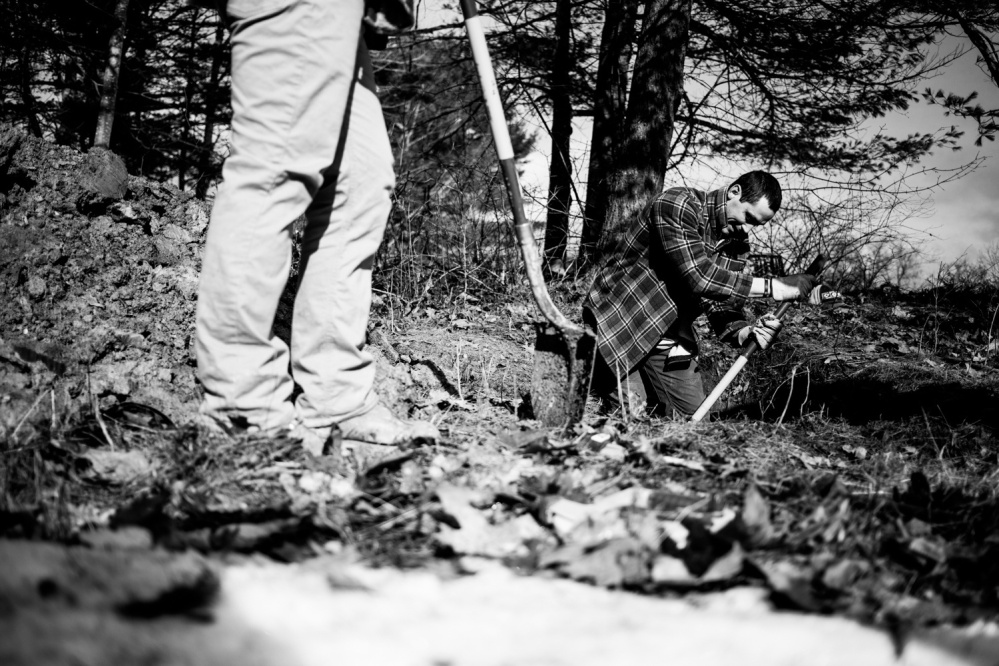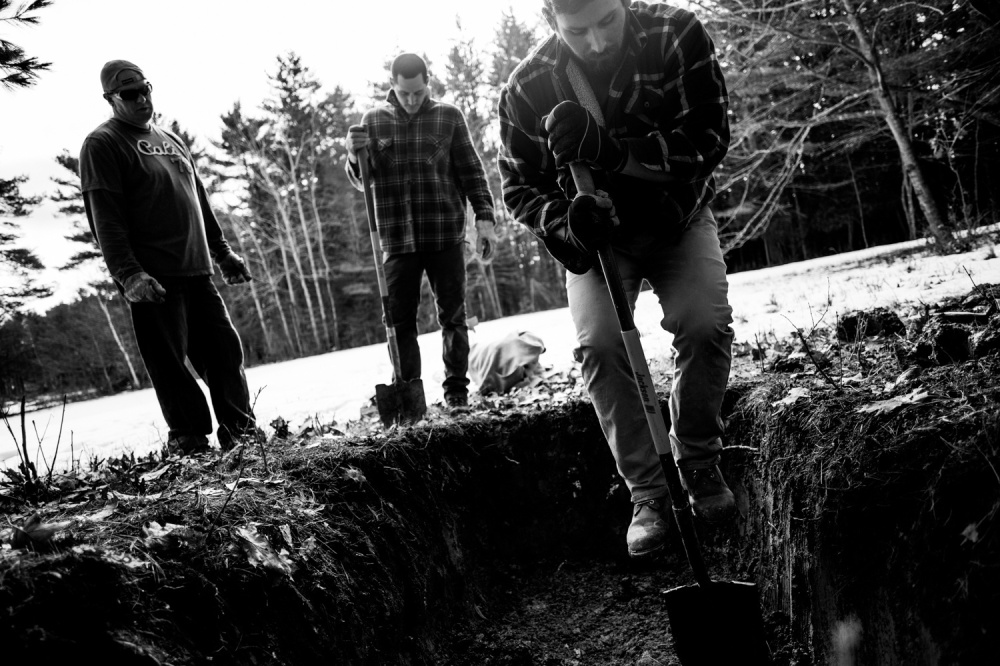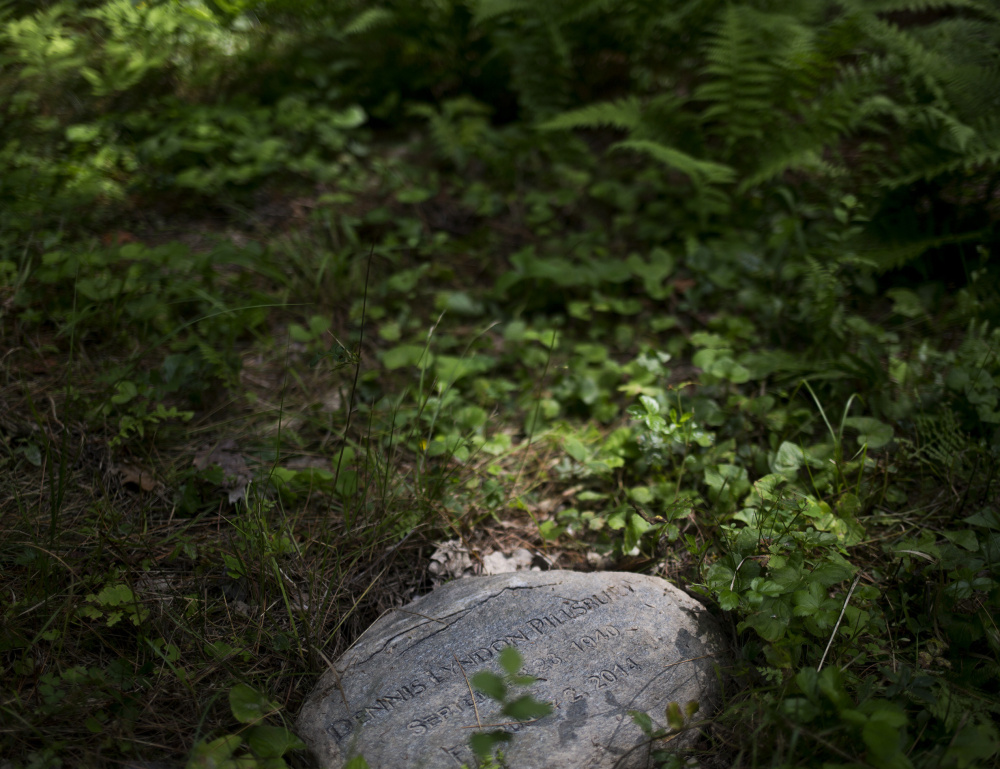People who spend their lives trying to lessen their impact on the natural world increasingly want to die that way, too.
Green burials are becoming more popular across the country and in Maine, too. Though there’s no one place to go for data on the trend, many figures point to its increasing popularity: Two decades ago no cemeteries advertised green burials in the United States. Now more than 150 do so, according to Lee Webster, author of the green burial guide “Changing Landscapes.” The nonprofit Green Burial Council, which works to develop standards for green burials, has had more than 4,000 people sign up for online updates since 2011. And a Harris Poll in 2015 found that 64 percent of respondents were interested in green burials, compared to 43 percent in a similar poll in 2010; the poll questioned more than 1,200 people over the age of 40.
“The interest over the past few years has been growing exponentially, as more people understand the problems with conventional burials,” said Webster, a former Green Burial Council board member. “Twelve years ago I signed up for Google alerts about green burial stories and got one every six months. Now I get one every other day.”
Many people are embracing the idea of being buried in simple, wooden caskets or natural fiber shrouds, with no concrete vault. That way everything put in the ground, eventually, will become part of the ground. With most conventional burials, where a metal or chemically treated wood casket is placed in a concrete vault, there is a permanent impact on the land.
Chuck Lakin of Waterville, a longtime coffin maker, buried his wife in January at Rainbow’s End, a nonprofit green burial ground in Orrington, near Bangor. He was able to be involved in the process, driving her body to the cemetery himself in a pickup, and is happy to know he and his late wife are helping the planet’s long-term future.

Chuck Lakin stands inside one of his handmade coffins in his workshop in the basement of his Waterville home. A longtime advocate of home and green burials, he held a green burial for his late wife in January.
“I consider it a gift from her to me,” Lakin, 72, said. “Everything (in the plot) is completely biodegradable, and it’s in a wooded, natural area. I felt like the process was much more personal.”
So how does a person decide whether to have a green burial? How does one get started? Here are some things to consider when pondering a green burial in Maine and some resources to help with planning.
WHAT MAKES A BURIAL GREEN?
The two most important parts of a green burial, in terms of lessening the impact on the environment, are the choice of casket or burial container and the omission of a concrete vault to hold the coffin, said Kate Kalanick, executive director of the Green Burial Council. The nonprofit organization, based in Ojai, California, and begun in 2005, works with scientists, lawyers and funeral professionals to develop standards for green burials. Cemeteries and funeral directors, after meeting the standards, can be certified by the council.
Concrete vaults are used to help keep a cemetery level, so it can be mowed and landscaped. And there is a long-held belief in the United States that concrete vaults help protect the casket and help make that burial plot the permanent resting place of the deceased, said Webster, a New Hampshire resident who is serving as president of the National Home Funeral Alliance. “It’s a very American idea that we deserve to own this piece of property after we’re gone. We need to re-examine that idea.”
Concrete is not biodegradable, and making it expends a lot of fuel and energy. Many metal caskets or certain treated and adorned wooden caskets, won’t degrade either.
Other elements of most green burials include using a natural rock as a headstone, instead of a cut and quarried headstone, and using a burial ground that is left in a natural state. Cemeteries typically have fine lawns that require regular mowing and treatment with lawn chemicals, while green burial grounds are usually meadows, fields or woodlands with maybe a few paths that are cleared occasionally. Organizations like the National Home Funeral Alliance offer advice on green burials at home, say in the backyard or the meadow by a person’s house, but be aware that such burials require approval from the local government. Though not strictly an issue of environmental impact, most green burial advocates discourage embalming, and green cemeteries don’t accept embalmed bodies. That’s largely because of the possible health hazards to the workers preparing a body for burial, Kalanick said. Some critics point to studies that say exposure to embalming fluid increases the risk of cancer.
CREMATION GETTING GREENER
One might think cremating a body would be more eco-friendly, as ashes can be scattered about the landscape. But green burial advocates say it’s unclear whether the process is environmentally benign, according to the Green Burial Council. Cremation takes a lot of energy and heat. Recently, an alternative form of cremation, known as alkaline hydrolysis, has become available. That process uses heated water and requires just one-tenth of the energy that incineration does. Direct Cremation of Maine in Belfast is one place that offers the new process.
DO IT YOURSELF?
For people who want to do an entire green burial from start to finish, with no embalming, no funeral home, and the greenest possible burial ground, the Green Burial Council offers several resources. The group’s website, Greenburialcouncil.org, allows people to download “Your Green Burial Planning Guide” with a checklist that includes things like identifying a price range, considering spiritual aims, choosing containers and picking grave markers. The website also offers a Top 10 questions list, with answers, about green burials and another primer called “Going Out Green.”
Similar information, including Q&As and resource lists can be found at NewEnglandGreenFunerals.com, and the website of the National Home Funeral Alliance at Homefuneralalliance.org.
With the average cost of a conventional funeral today ranging from $8,000 to $10,000, totally green burials with no involvement from a funeral home can offer big savings. At Cedar Brook Burial Ground in Limington, owner Joyce Foley said a standard green burial at her cemetery costs about $2,100, including the plot, the casket, the cost of digging the grave and an engraved rock for a marker. Foley says many of her customers do hire a funeral director as well.
OR NOT: FUNERAL DIRECTORS CAN HELP
Any funeral director can help you with a green burial, says Webster at the National Home Funeral Alliance. In arranging your own green burial, you pay only for the plot, the container and the cost to dig up the ground. But you need to keep the body until burial, on ice or refrigerated, and you need to transport it. If you hire a funeral director to take the body, you pay for that service.
Some funeral directors have training in green burials, such as David Floryan, a funeral director for Jones, Rich & Barnes in Portland and Lindquist Funeral Home in Yarmouth. Both are certified by the Green Burial Council. Floryan sells biodegradable wicker basket caskets, and biodegradable shrouds. The funeral home can keep the body refrigerated, without embalming, until burial, Floryan said. The funeral home can also offer calling hours, though many who are interested in a green burial prefer a simpler graveside service.
Depending on what his funeral home is hired for, he says the total cost of a green burial might be about the same as a conventional one.
GREENER PASTURES
Maine has at least two all-green burial grounds, Cedar Brook Burial Ground in Limington and Rainbow’s End in Orrington. Burr Cemetery, a private cemetery in Freeport, offers both conventional and green burials. Other than these three, consumers need to check with individual cemeteries to see if they allow burials without concrete vaults.
Since it opened about 10 years ago, Cedar Brook has sold 207 plots and had 55 burials, said Foley, the owner. The rural, wooded burial ground is part of 150 acres owned by Foley’s longtime life partner, Peter McHugh. A family burial plot on the land that dates to the 1700s sparked McHugh’s interested in being buried on his own land, in a green way. McHugh died in 2013.
Like all cemeteries, green cemeteries have to be approved by the state’s Division of Environmental Health.
Foley sells lots for $800 for a single or $1,400 for a double. The cost to dig up the land varies by season: In summer, it’s $600, in winter $800. A wooden coffin will cost $400 or so, and a shroud or blanket will cost less. People can pick out a rock from the property and have it engraved for $100.
When people pick their plots at Cedar Brook, they often pick one near a tree, embracing the idea that their remains will nourish that tree.
Picking out a green burial plot, knowing that your death or the death of a loved one might help enrich the soil can be comforting, Foley said.
“I had man here from Massachusetts yesterday, with cancer, and when we were walking he saw a hummingbird,” said Foley. “He told me that coming here was one of the most enjoyable experiences he had in a long time.”
Ray Routhier can be contacted at 210-1183 or at:
rrouthier@pressherald.com
Twitter: @RayRouthier
Send questions/comments to the editors.






